Enhancing Classroom Lighting Quality in Tehran Through the Integration of a Dynamic Light Shelf and Solar Panels
Abstract
1. Introduction
- Photovoltaic panels should not be mounted directly on the light shelf but should instead be installed at their optimal tilt angles.
- Integration of solar panels with light shelves is more appropriate during the winter season.
Theoretical Foundations and Research Objectives
- How can photovoltaic panels be employed to simultaneously prevent glare during winter and generate electricity at their maximum potential?
- What is the most suitable combination of geometry, depth, and surface reflectance for the light shelf to achieve its highest performance across different seasons?
2. Materials and Methods
2.1. Research Process
- Integration with solar panels:
- 2.
- Finding a suitable combination of geometry, depth, and reflectance for each season:
2.2. Research Context
2.3. Validation
3. Results
- Assessment of the existing classroom conditions;
- The appropriate integration of photovoltaic panels with the light shelf;
- The proposed suitable geometry, depth and reflectance of the light shelf in each season.
3.1. Assessment of Current Conditions
3.2. The Appropriate Integration of Photovoltaic Panels with the Light Shelf
- Single solar panel with a depth of 60 cm.
- Two solar panels, each with a depth of 30 cm.
- Three solar panels, each with a depth of 20 cm.
- Four solar panels, each with a depth of 15 cm.
3.3. Proposed Suitable Geometry, Depth and Reflectance of Light Shelf in Each Season
4. Discussion
4.1. Integrating Photovoltaic Panels with Light Shelf as Shading System During Winter
4.2. Proposed Suitable Geometry, Depth, and Reflectance of Light Shelf in Each Season
5. Conclusions
Author Contributions
Funding
Data Availability Statement
Acknowledgments
Conflicts of Interest
References
- Wohlfarth, H.; Gates, K.S. The effects of color-psychodynamic environmental color and highting modification of elementary schools on blood pressure and mood: A controlled study. Int. J. Biosoc. Res. 1985, 7, 9–16. [Google Scholar]
- Masoud, S.; Zamani, Z. Improving the quality of daylight in classrooms using lightshelf. Naqshejahan-Basic Stud. New Technol. Archit. Plan. 2025, 15, 1–16. Available online: http://bsnt.modares.ac.ir/article-2-75657-en.html (accessed on 8 February 2024).
- Dehghan Lotfabad, A.; Hosseini, S.M.; Dabove, P.; Heiranipour, M.; Sommese, F. Impacts of Vertical Greenery on Outdoor Thermal Comfort and Carbon Emission Reduction at the Urban Scale in Turin, Italy. Buildings 2025, 15, 450. [Google Scholar] [CrossRef]
- Kamalabadi, S.T.; Hosseini, S.M.; Azmoodeh, M. Integration of bio-inspired adaptive systems for optimizing daylight performance and glare control. J. Build. Eng. 2025, 105, 112415. [Google Scholar] [CrossRef]
- Hoxha, E.; Hosseini, S.M.; Soust-Verdaguer, B.; de Boer, J. Environmental Impacts of Light Sources in Buildings: Analysis of Environmental Product Declarations (EPDs) in European Union. Buildings 2025, 15, 1279. [Google Scholar] [CrossRef]
- Zaina, S.M.; Fadli, F.; Hosseini, S.M. Evaluation of smart irrigation systems in hot-arid climates for green roofs and walls: Case of Doha, Qatar. Smart Sustain. Built Environ. 2022, 11, 346–367. [Google Scholar] [CrossRef]
- Masoud, S.; Zamani, Z.; Hosseini, M.; Attia, S. A Review of Factors Affecting the Lighting Performance of Light Shelves and Controlling Solar Heat Gain. Buildings 2024, 14, 1832. [Google Scholar] [CrossRef]
- Sern, C.H.Y.; Liou, L.T.K.; Jun, B.J.; Fadzil, S.F.B.S. Daylight Performance of Integrated Horizontal Light Pipe with Shading Devices (Validation) for High-Rise Building in Tropical Climate. J. Adv. Res. Appl. Sci. Eng. Technol. 2023, 33, 384–391. [Google Scholar] [CrossRef]
- Labib, R. Trade-off method to assess the interaction between light shelves and complex ceiling forms for optimized daylighting performance. Adv. Build. Energy Res. 2015, 9, 224–237. [Google Scholar] [CrossRef]
- Moazzeni, M.H.; Ghiabaklou, Z. Investigating the influence of light shelf geometry parameters on daylight performance and visual comfort, a case study of educational space in Tehran, Iran. Buildings 2016, 6, 26. [Google Scholar] [CrossRef]
- Mangkuto, R.A.; Feradi, F.; Putra, R.E.; Atmodipoero, R.T.; Favero, F. Optimisation of daylight admission based on modifications of light shelf design parameters. J. Build. Eng. 2018, 18, 195–209. [Google Scholar] [CrossRef]
- Nassiri, B.; Mahmodi, Z.M. Achieving the Principles of High Performance of Light Shelves Design in Educational Buildings. J. Environ. Sci. Technol. 2020, 22, 359–369. [Google Scholar]
- Bahdad, A.A.S.; Fadzil, S.F.S.; Taib, N. Optimization of daylight performance based on controllable light-shelf parameters using genetic algorithms in the tropical climate of Malaysia. J. Daylighting 2020, 7, 122–136. [Google Scholar] [CrossRef]
- Eckerlin, H.; Manning, M.; Atre, U.; Zubizarreta, J. A New Daylighting Strategy for a Middle School in North Carolina. In Proceedings of the Solar Conference; American Solar Energy Society: Austin, TX, USA, 2007. [Google Scholar]
- Ziaee, N.; Vakilinezhad, R. Multi-objective optimization of daylight performance and thermal comfort in classrooms with light-shelves: Case studies in Tehran and Sari, Iran. Energy Build. 2022, 254, 111590. [Google Scholar] [CrossRef]
- Ebrahimi-Moghadam, A.; Ildarabadi, P.; Aliakbari, K.; Fadaee, F. Sensitivity analysis and multi-objective optimization of energy consumption and thermal comfort by using interior light shelves in residential buildings. Renew. Energy 2020, 159, 736–755. [Google Scholar] [CrossRef]
- Bahdad, A.A.S.; Fadzil, S.F.S.; Onubi, H.O.; BenLasod, S.A. Sensitivity analysis linked to multi-objective optimization for adjustments of light-shelves design parameters in response to visual comfort and thermal energy performance. J. Build. Eng. 2021, 44, 102996. [Google Scholar] [CrossRef]
- Mahdavinejad, M.; Tahbaz, M.; Dolatabadi, M. Optimization of Properties and Light Shelf System in Architecture of Learning Building. J. Fine Arts Archit. Urban Plan. 2016, 21, 81–92. [Google Scholar] [CrossRef]
- Meresi, A. Evaluating daylight performance of light shelves combined with external blinds in south-facing classrooms in Athens, Greece. Energy Build. 2016, 116, 190–205. [Google Scholar] [CrossRef]
- Kurtay, C.; Esen, O. A new method for light shelf design according to latitudes: CUN-OKAY light shelf curves. J. Build. Eng. 2017, 10, 140–148. [Google Scholar] [CrossRef]
- Freewan, A.A. Maximizing the Lightshelf Performance by Interaction between Lightshelf Geometries and a Curved Ceiling. Energy Convers. Manag. 2010, 51, 1600–1604. [Google Scholar] [CrossRef]
- Lim, Y.W.; Heng, C.Y.S. Dynamic internal light shelf for tropical daylighting in high-rise office buildings. Build. Environ. 2016, 106, 155–166. [Google Scholar] [CrossRef]
- Freewan, A.A.; Shao, L.; Riffat, S. Optimizing Performance of the Lightshelf by Modifying Ceiling Geometry in Highly Luminous Climate. Sol. Energy 2008, 82, 343–353. [Google Scholar] [CrossRef]
- Dogan, T.; Stec, P. Prototyping a façade-mounted, dynamic, dual-axis daylight redirection system. Light. Res. Technol. 2016, 50, 583–595. [Google Scholar] [CrossRef]
- Öner, M.; Kazanasmaz, Z.T. Illuminance and luminance based ratios in the scope of performance testing of a light shelf-reflective louver system in a library reading room. Light Eng. 2019, 27, 39–46. [Google Scholar] [CrossRef]
- Xue, P.; Mak, C.M.; Cheung, H.D. New Static Lightshelf System Design of Clerestory Windows for Hong Kong. Build. Environ. 2014, 72, 368–376. [Google Scholar] [CrossRef]
- Ruggiero, S.; Assimakopoulos, M.N.; De Masi, R.F.; de Rossi, F.; Fotopoulou, A.; Papadaki, D.; Ferrante, A. Multi-disciplinary analysis of light shelves application within a student dormitory refurbishment. Sustainability 2021, 13, 8251. [Google Scholar] [CrossRef]
- Sok, T.; Tuaycharoen, N. Effect of multiple curved light shelves on daylighting in university classrooms. In Proceedings of the Kasetsart University Academic Conference, Bangkok, Thailand, 15–16 October 2019. [Google Scholar] [CrossRef]
- Abboushi, B.K. The Effects of Adaptive Shading and the Selective Reflector Light Shelf on Office Building Energy Efficiency and Daylight Performance in Hot arid Regions; College of Architecture, Planning, and Landscape Architecture, The University of Arizona: Tucson, AZ, USA, 2013. [Google Scholar]
- Brzezicki, M. An Evaluation of Useful Daylight Illuminance in an Office Room with a Light Shelf and Translucent Ceiling at 51 N. Buildings 2021, 11, 494. [Google Scholar] [CrossRef]
- Moon, J.W.; Baik, Y.K.; Kim, S. Operation guidelines for daylight dimming control systems in an office with lightshelf configurations. Build. Environ. 2020, 180, 106968. [Google Scholar] [CrossRef]
- Lee, H.; Seo, J.; Kim, S. Improvement of light-shelf performance through the use of a diffusion sheet. Build. Environ. 2018, 144, 248–258. [Google Scholar] [CrossRef]
- Lee, H.; Zhao, X.; Seo, J. A study of optimal specifications for light shelves with photovoltaic modules to improve indoor comfort and save building energy. Int. J. Environ. Res. Public Health 2021, 18, 2574. [Google Scholar] [CrossRef]
- Mesloub, A.; Ghosh, A. Daylighting performance of light shelf photovoltaics (LSPV) for office buildings in hot desert-like regions. Appl. Sci. 2020, 10, 7959. [Google Scholar] [CrossRef]
- Lee, S.; Lee, H. A Preliminary Study on Daylighting Performance Experiment of External Lightshelf System with a Base-Attached PV Panel. J. Green Eng. 2021, 11, 1909–1925. [Google Scholar]
- Lee, H.; Han, S.; Seo, J. Light shelf development using folding technology and photovoltaic modules to increase energy efficiency in building. Buildings 2022, 12, 81. [Google Scholar] [CrossRef]
- Lee, H.; Baek, S.; Lee, H. A study on the application of solar modules to light shelves to improve generation and daylighting efficiency. Energy Build. 2022, 261, 111976. [Google Scholar] [CrossRef]
- Bakmohammadi, P.; Noorzai, E. Investigating the optimization potential of daylight, energy and occupant satisfaction performance in classrooms using innovative photovoltaic integrated light shelf systems. Sci. Technol. Built Environ. 2022, 28, 467–482. [Google Scholar] [CrossRef]
- ClimateStudio. (n.d.). LEED v4 Daylight Option 1—ClimateStudio Documentation. Available online: https://climatestudiodocs.com/docs/daylightLEEDOpt1.html (accessed on 19 April 2025).
- Deluminae Lab. (n.d.). Spatial Daylight Autonomy (sDA/ASE)—Deluminae Lab Documentation. Available online: https://deluminaelab.com/docs/dl-light/en/spatialda.html (accessed on 19 April 2025).
- Ministry of Education New Zealand. Design Quality Learning Spaces: Lighting and Visual Comfort Overview. 2023. Available online: https://web-assets.education.govt.nz/s3fs-public/2024-10/DQLS-lighting-overview-12-jul-2023.pdf (accessed on 8 February 2024).
- Deng, Y.; Liu, J.; Zhang, J.; Wang, H. Optimization of Dynamic Shading Device for Visual Comfort and Energy Efficiency in Educational Buildings Based on Climate-Based Simulation. Buildings 2024, 14, 1773. [Google Scholar] [CrossRef]
- Daum, D. On the Adaptation of Building Controls to the Envelope and the Occupant. Ph.D. Thesis, Ecole Polytechnique University, Lausanne, Switzerland, 2011. [Google Scholar]
- Goharian, A.; Mahdavinejad, M.; Ghazazani, S.; Hosseini, M.; Zamani, Z.; Yavari, H.; Ghafarpoor, F.; Shoghi, F. Designing Adaptability Strategy to a Novel Kinetic Adaptive Façade (NKAF); Toward a Pioneering Method in Dynamic-objects Daylight Simulation (Post-Processing). J. Daylight. 2025, 12, 69–90. [Google Scholar] [CrossRef]
- Zocchi, G.; Hosseini, M.; Triantafyllidis, G. Exploring the Synergy of Advanced Lighting Controls, Building Information Modelling and Internet of Things for Sustainable and Energy-Efficient Buildings: A Systematic Literature Review. Sustainability 2024, 16, 10937. [Google Scholar] [CrossRef]
- Hosseini, S.M.; Heidari, S.; Attia, S.; Wang, J.; Triantafyllidis, G. Biomimetic kinetic façade as a real-time daylight control: Complex form versus simple form with proper kinetic behavior. Smart Sustain. Built Environ. 2024; ahead-of-print. [Google Scholar]
- Warrier, G.A.; Raphael, B. Performance evaluation of light shelves. Energy Build. 2017, 140, 19–27. [Google Scholar] [CrossRef]
- Sabry, H.; Sherif, A.; Gadelhak, M.; Aly, M. Balancing the daylighting and energy performance of solar screens in residential desert buildings: Examination of screen axial rotation and opening aspect ratio. Sol. Energy 2014, 103, 364–377. [Google Scholar] [CrossRef]
- National Building Regulations Council. Chapter 14: Mechanical Installations, 3rd ed.; Ministry of Roads and Urban Development, Building and Housing Research Center Publications: Tehran, Iran, 2017. Available online: https://inbr.ir/wp-content/uploads/2016/08/mabhas-14.pdf (accessed on 8 February 2024).
- National Building Regulations Council. Chapter 19: Energy Consumption Optimization, 4th ed.; Ministry of Roads and Urban Development, Building and Housing Research Center Publications: Tehran, Iran, 2020. Available online: https://inbr.ir/upload/mabhas/1402-08/mabhas19-1402-08.pdf (accessed on 8 February 2024).
- Littlefair, P.J. Light Shelves: Computer Assessment of Daylighting Performance. Light. Res. Technol. 1995, 27, 79–91. [Google Scholar] [CrossRef]
- ANSI/ASHRAE Standard 140-2020; Standard Method of Test for the Evaluation of Building Energy Analysis Computer Programs. American Society of Heating, Refrigerating and Air-Conditioning Engineers: Atlanta, GA, USA, 2020.
- Nouri, A.; Frisch, J.; van Treeck, C. Statistical Methodologies for Verification of Building Energy Performance Simulation. In Proceedings of the 17th IBPSA Conference, Bruges, Belgium, 1–3 September 2021. [Google Scholar] [CrossRef]
- Akter, M.N.; Mahmud, M.A.; Oo, A.M. Comprehensive economic evaluations of a residential building with solar photovoltaic and battery energy storage systems: An Australian case study. Energy Build. 2017, 138, 332–346. [Google Scholar] [CrossRef]


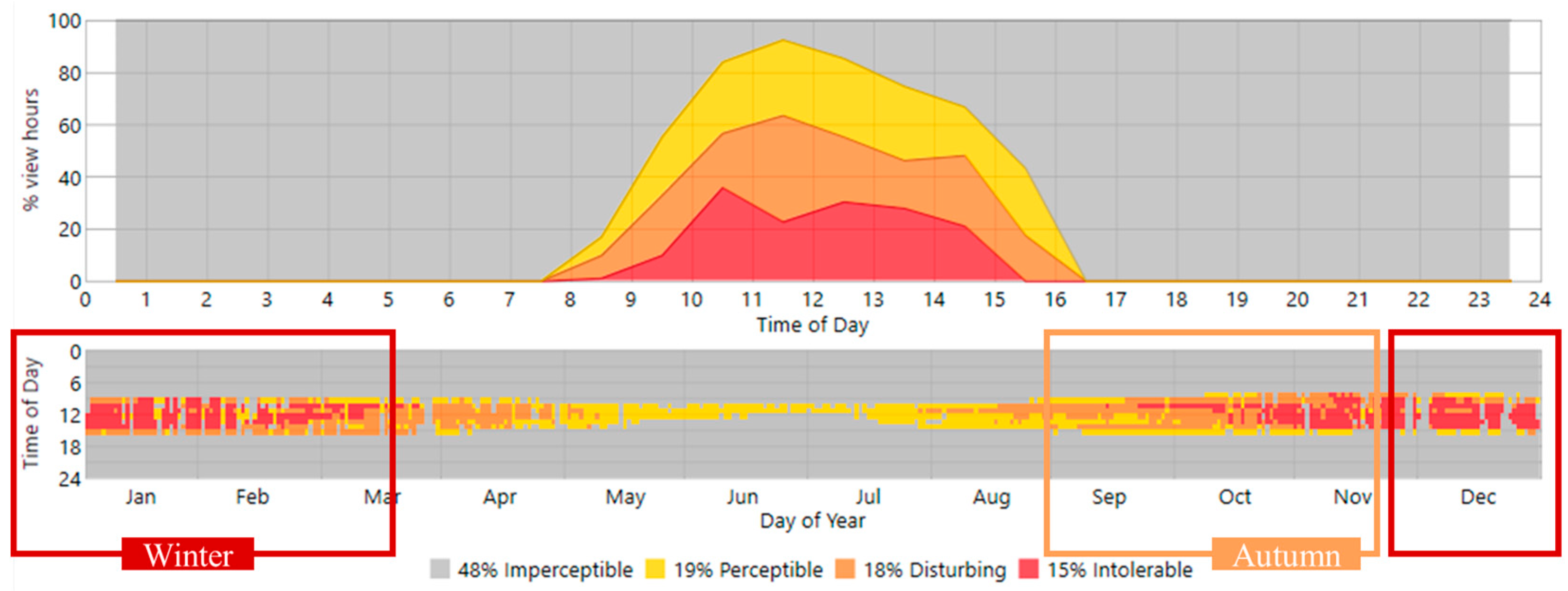
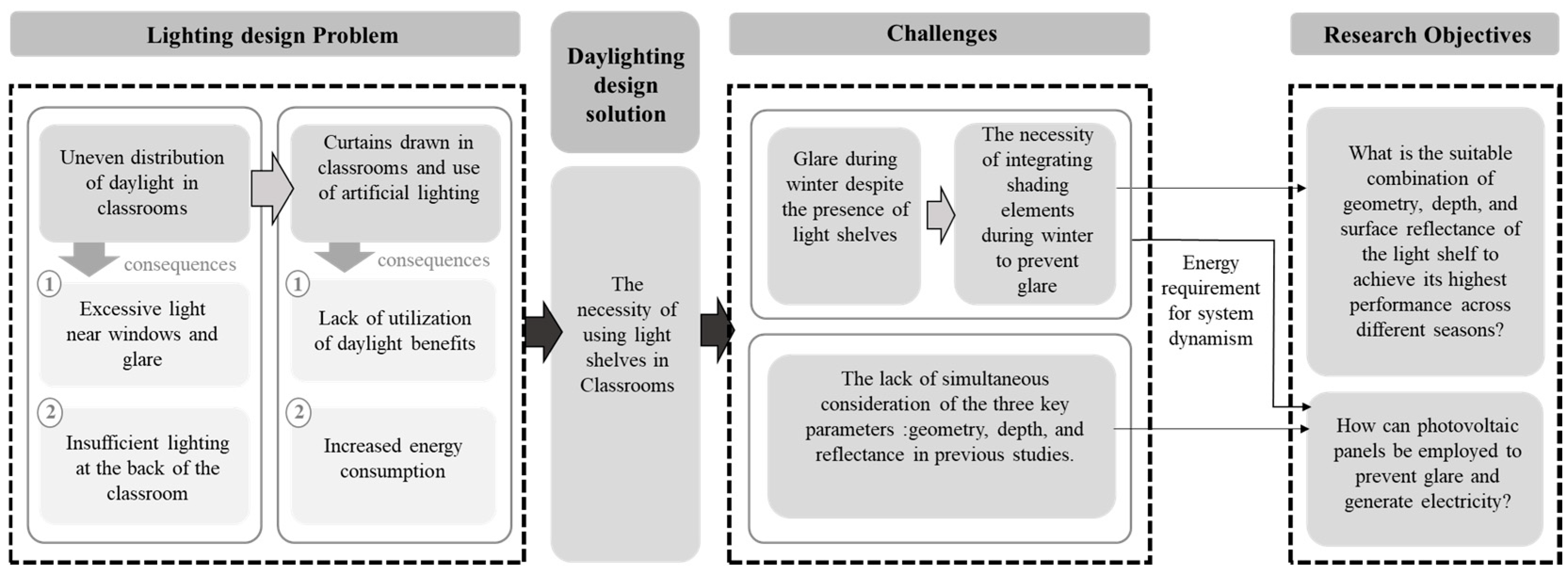
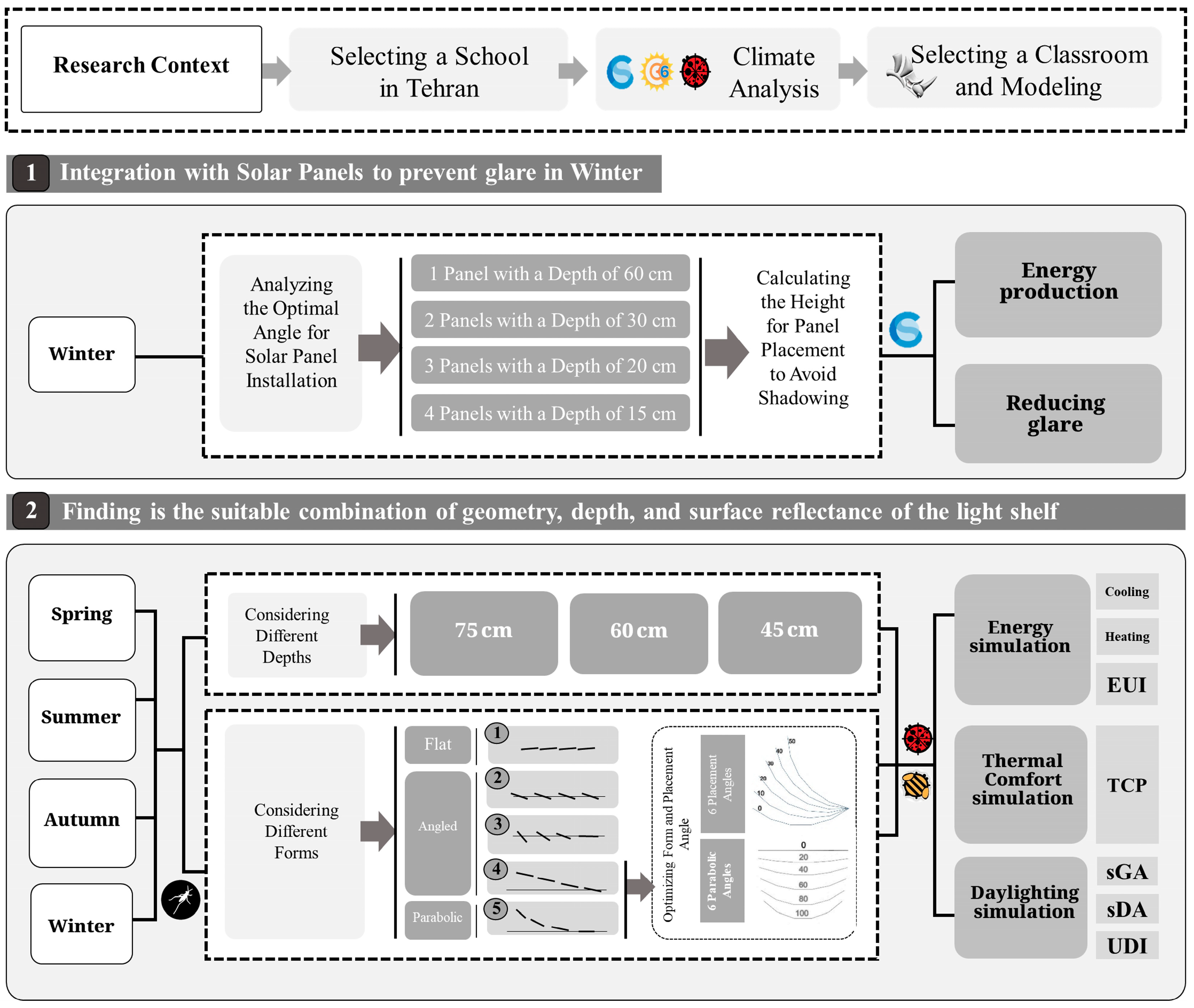
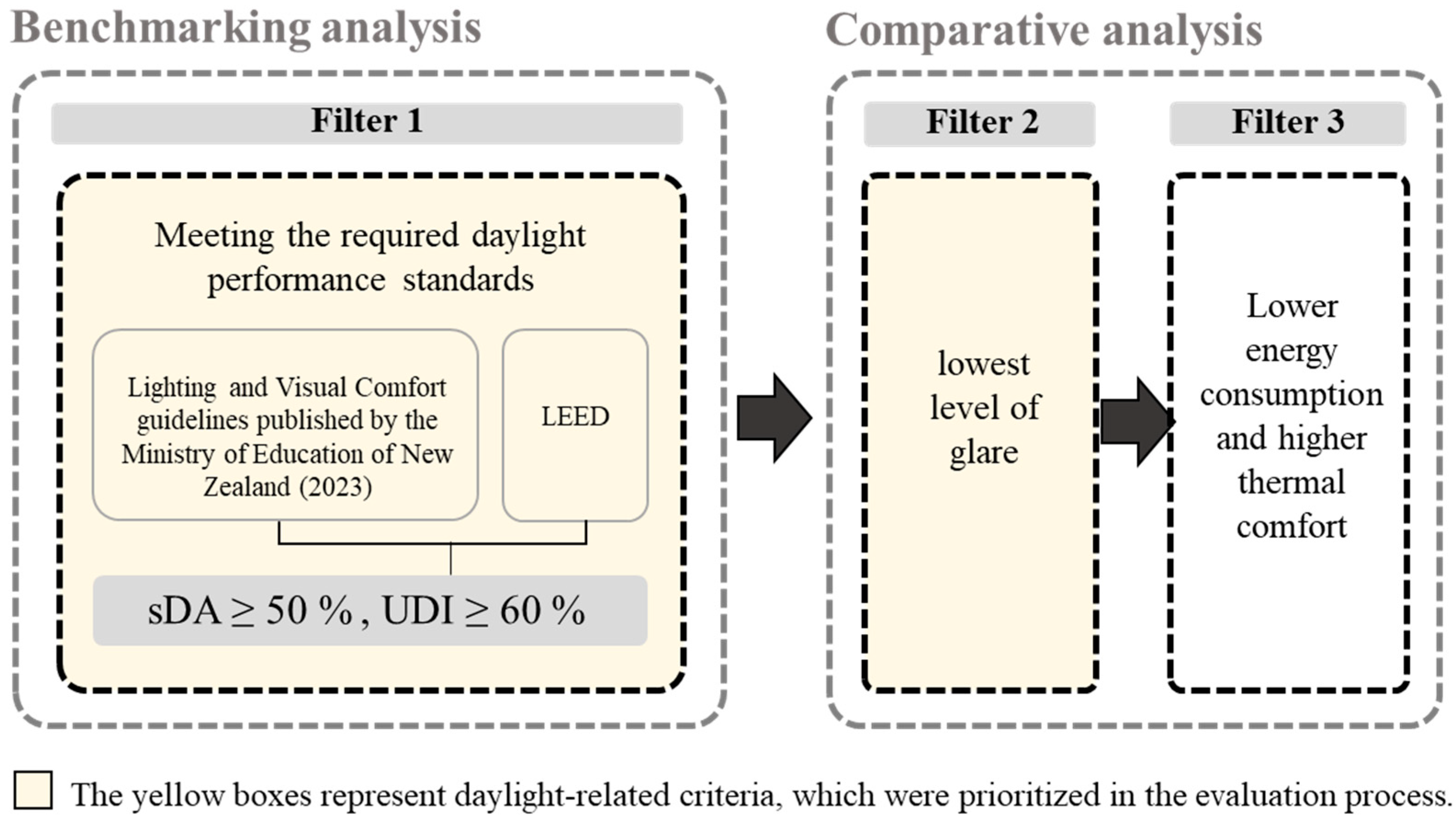
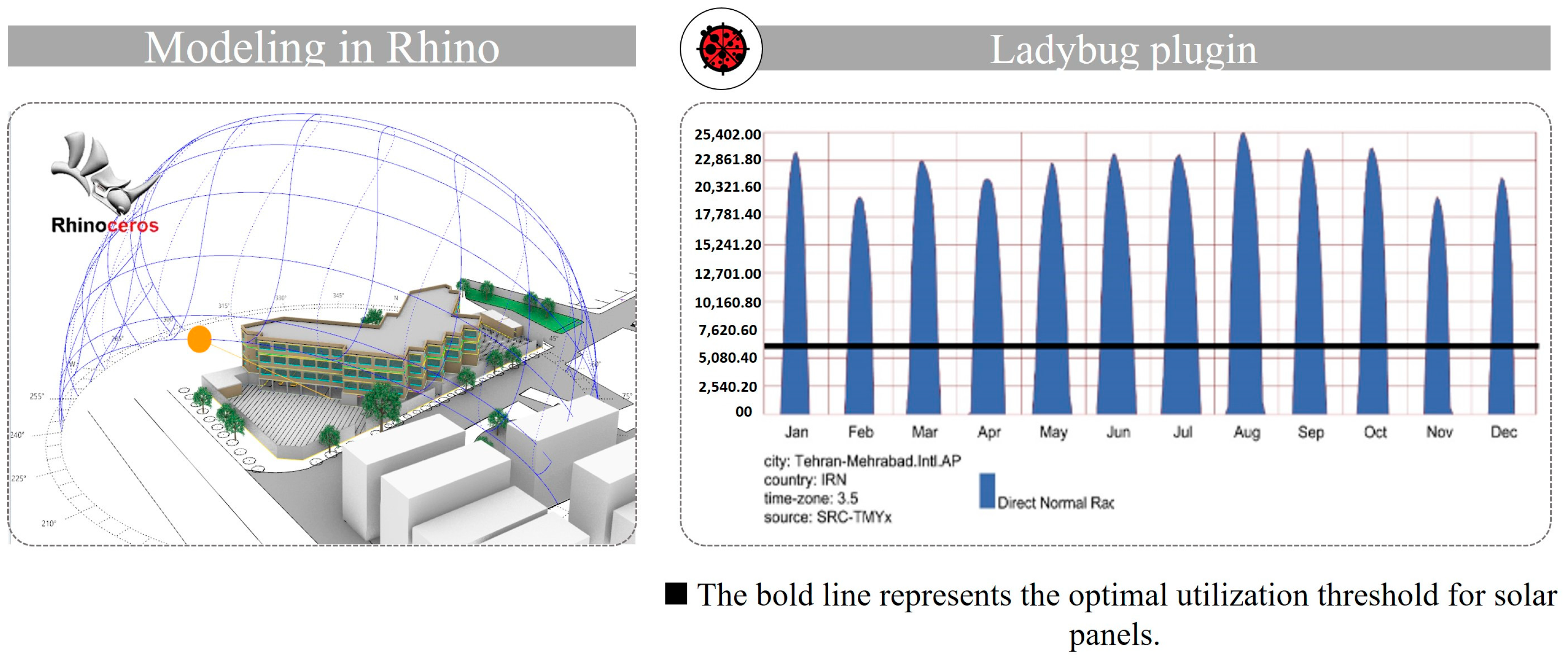
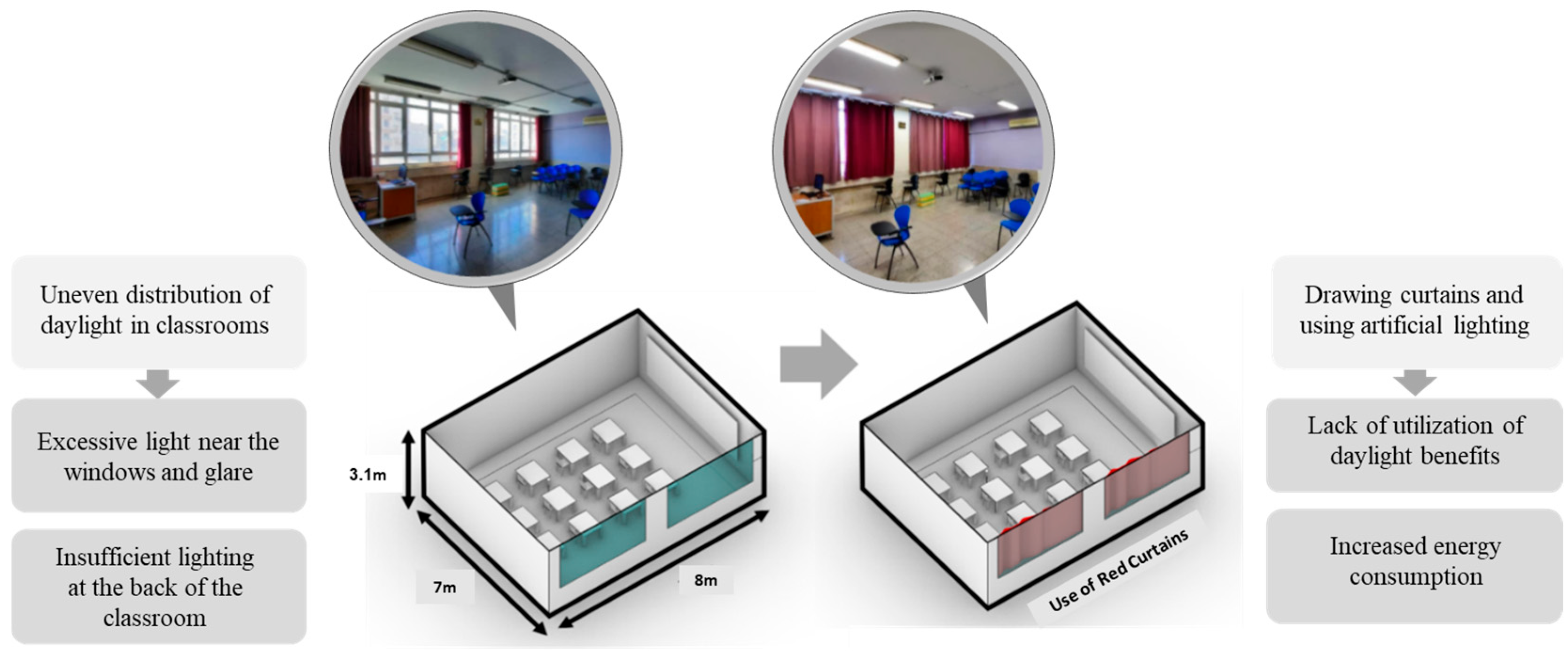
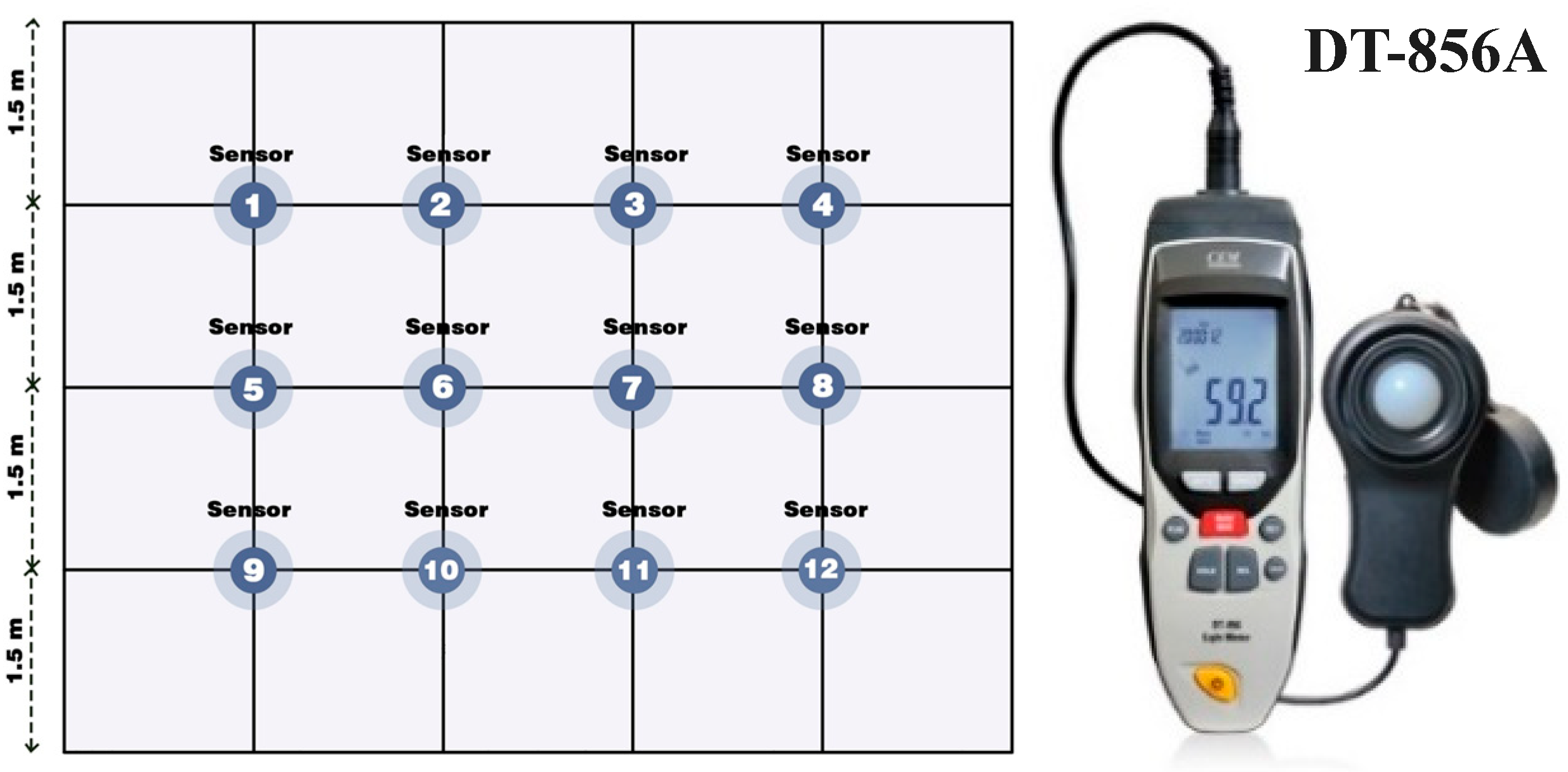
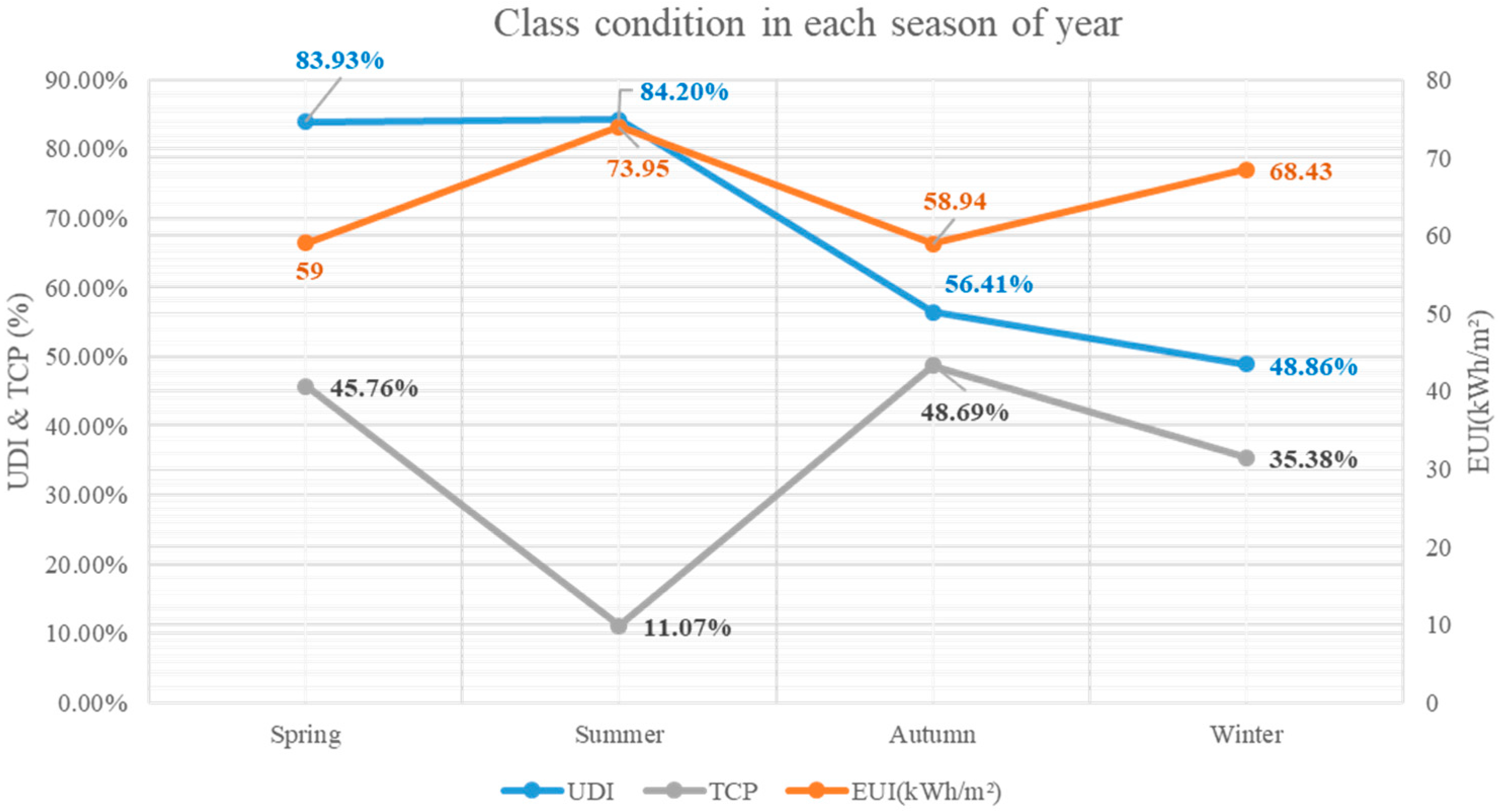
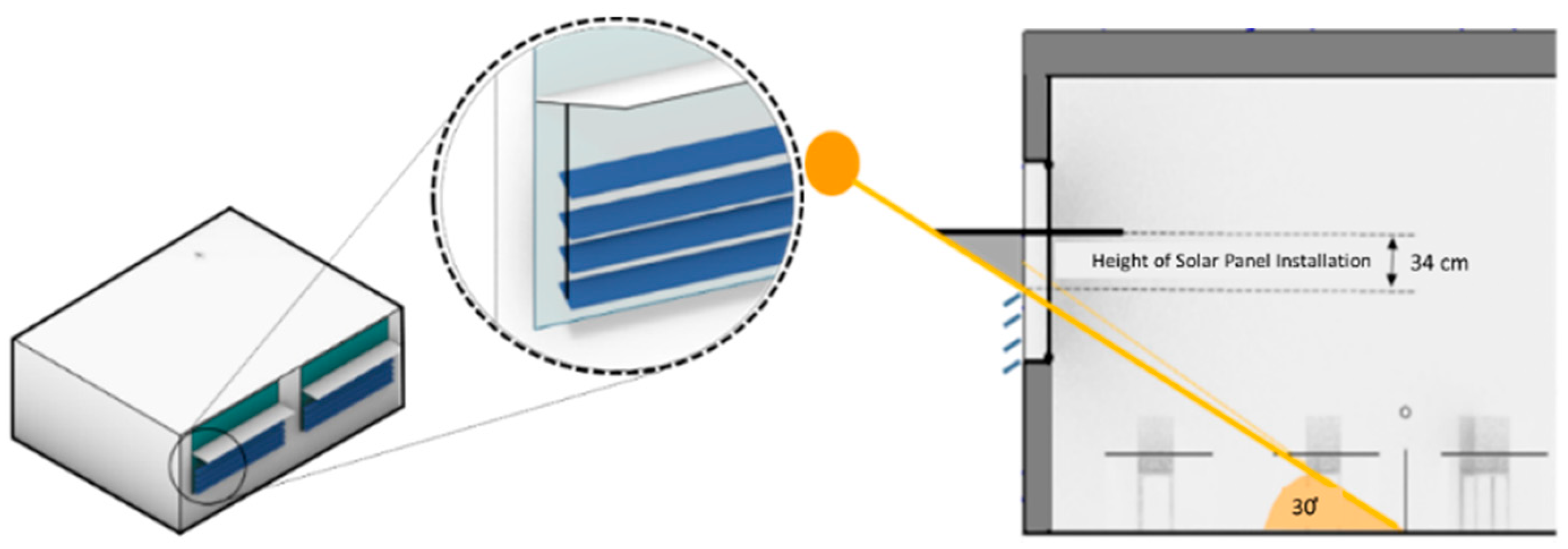
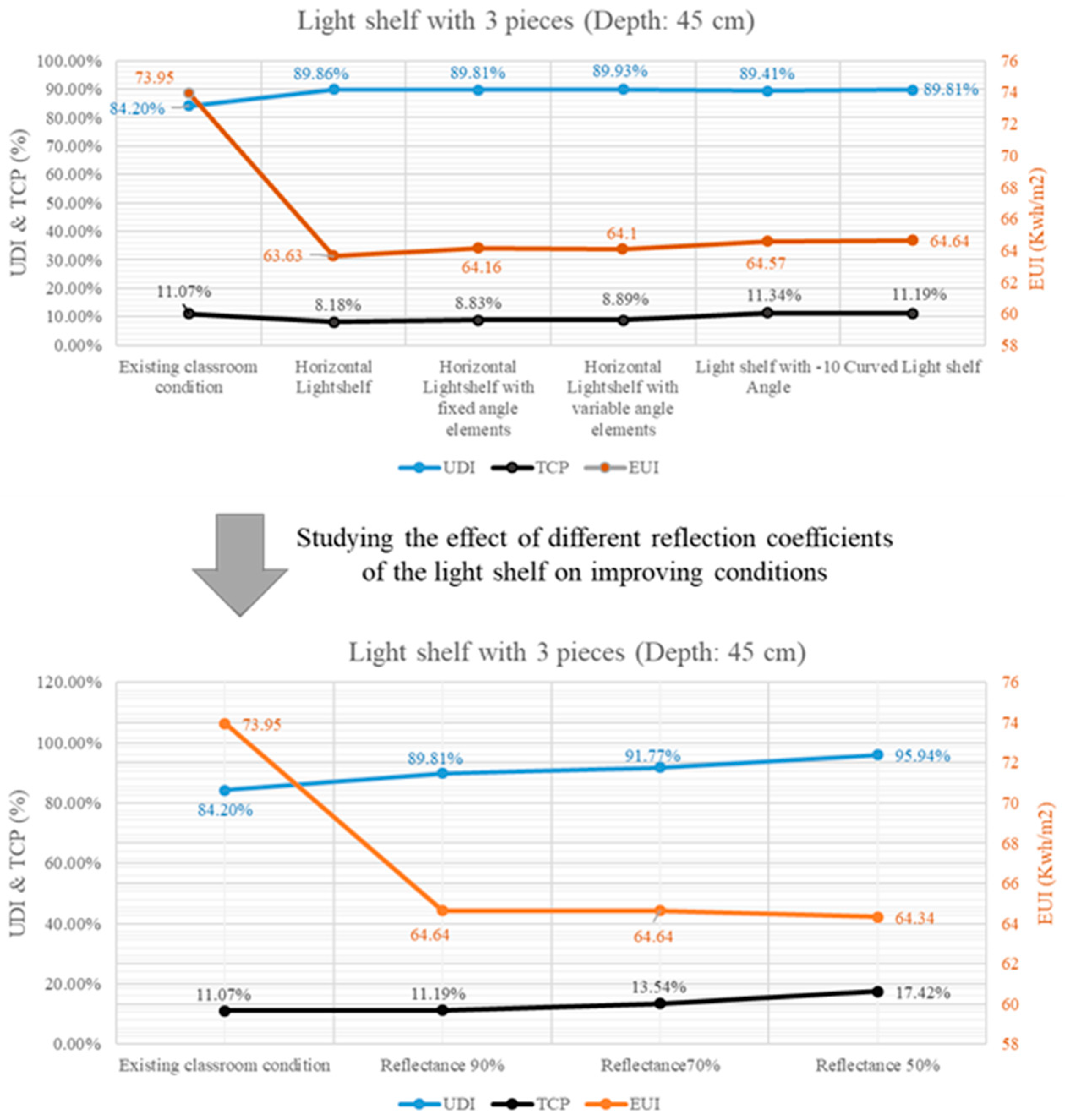
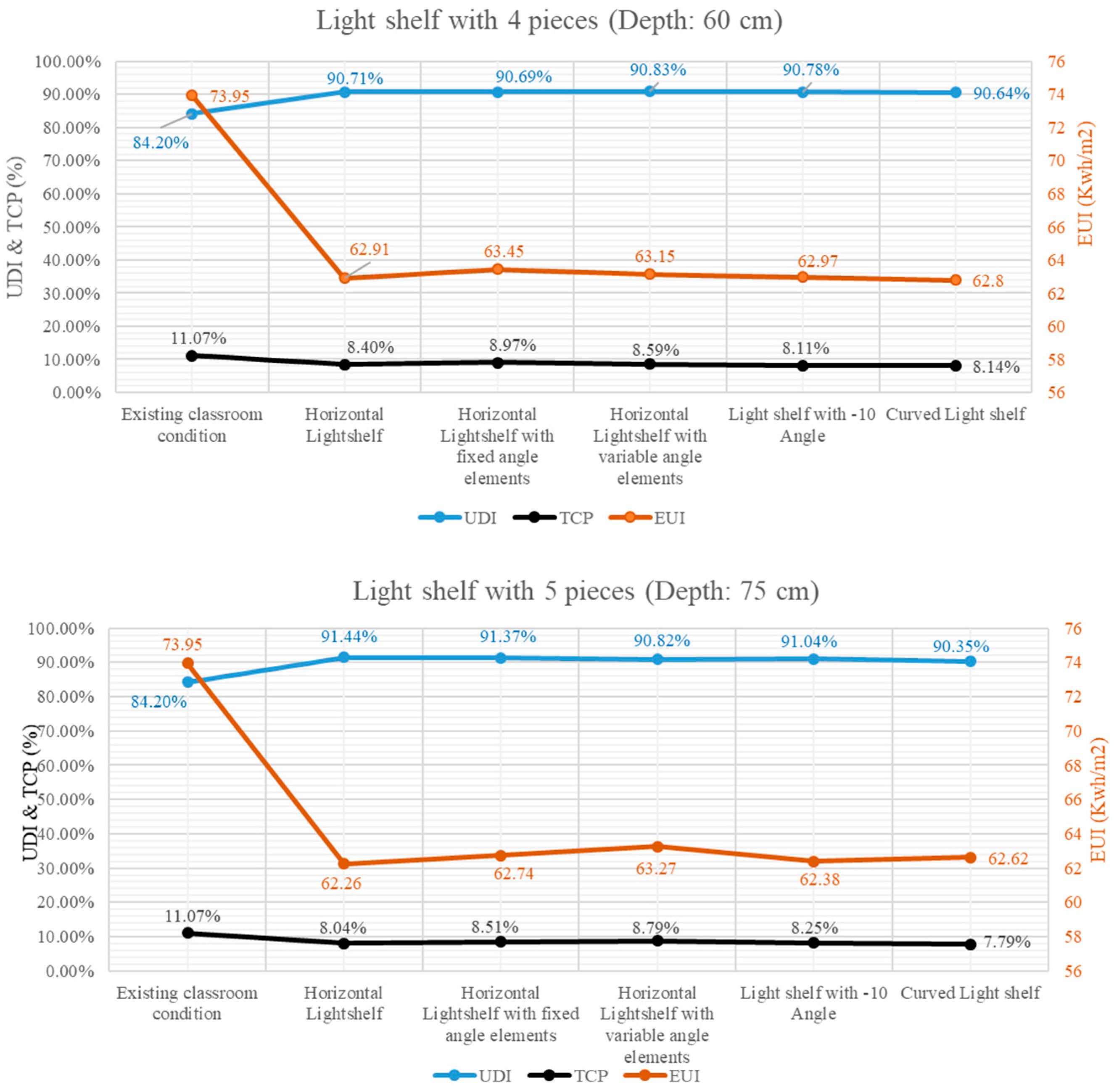

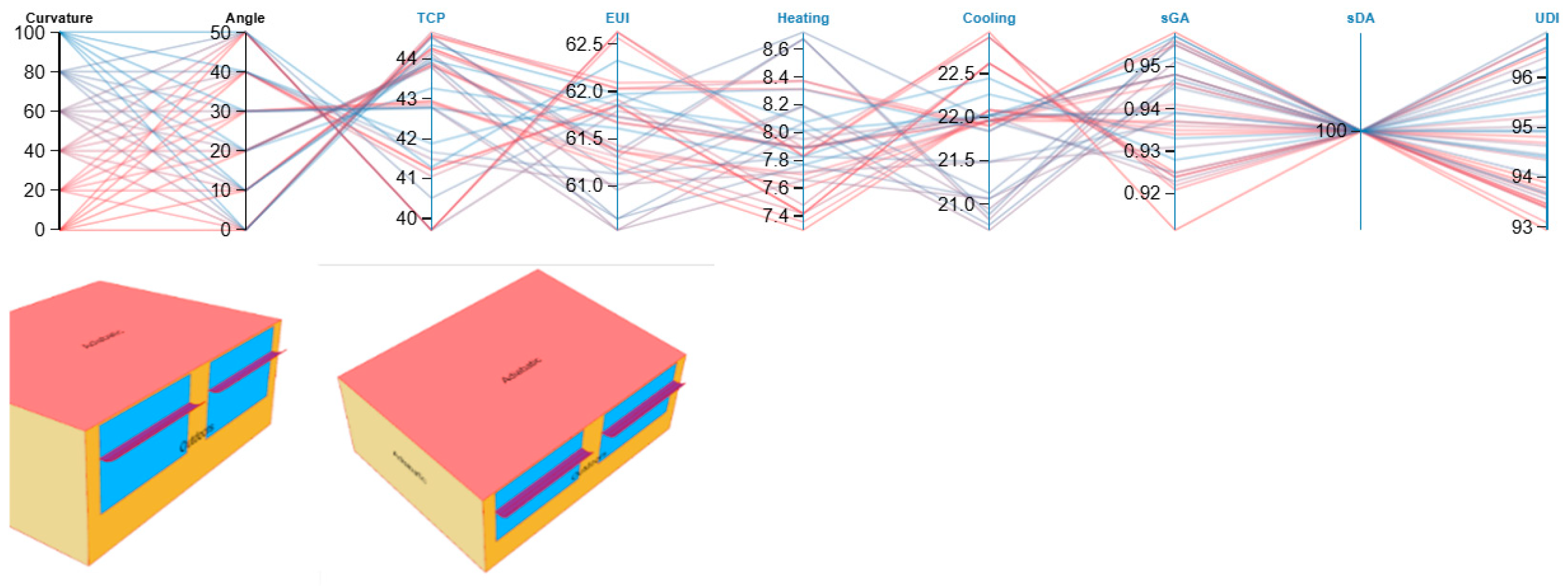

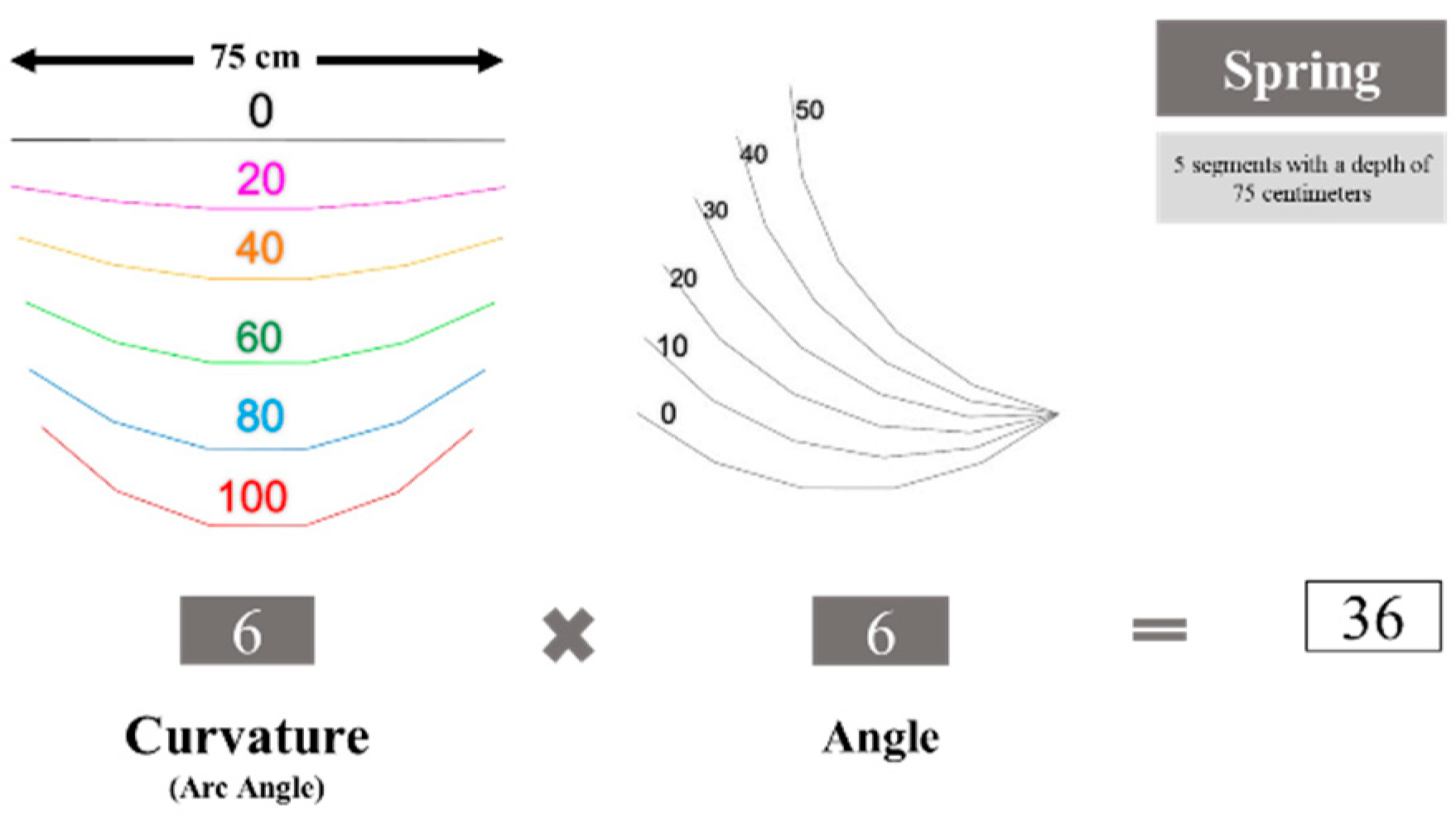

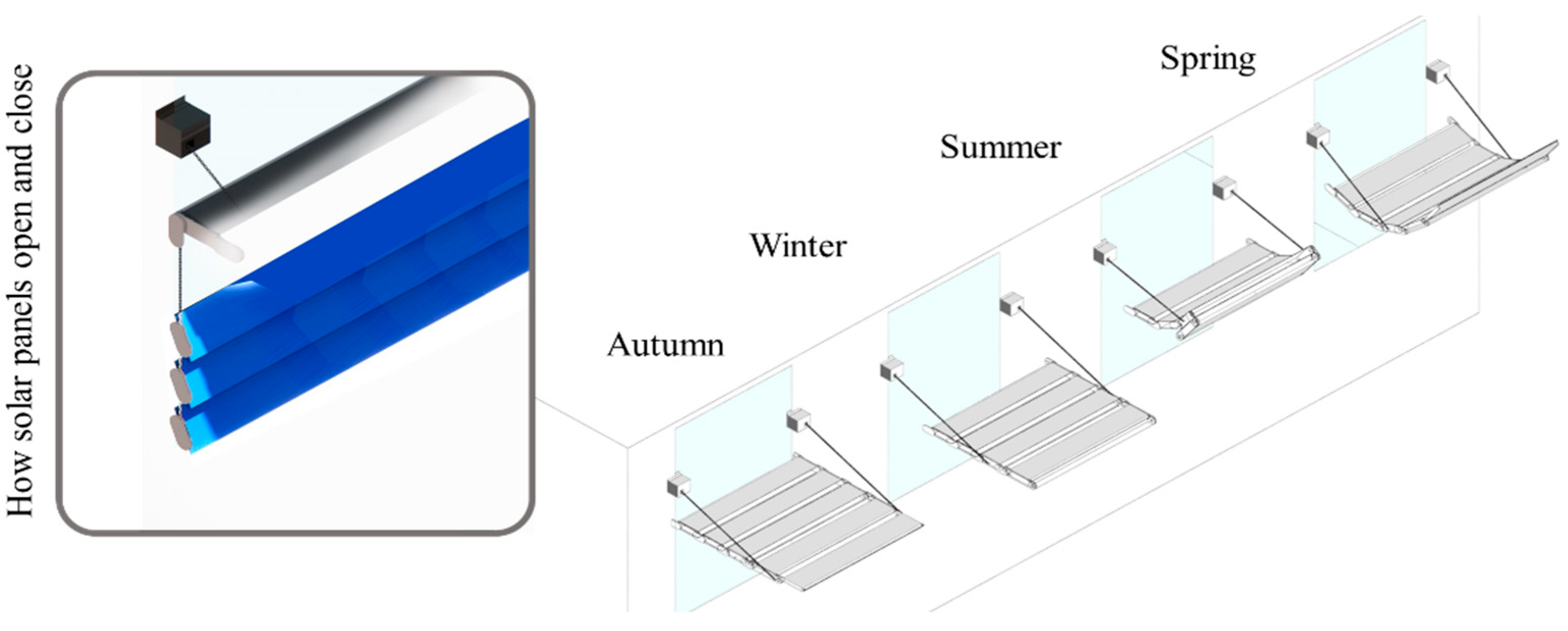

| Testing Method | Space Utilization | Type of Light Shelf (Static/ Dynamic) | Orientation | Field of Investigation (Daylight Quality–Energy Consumption–Thermal Comfort) | Approaches | |
|---|---|---|---|---|---|---|
| [8] | IESVE | Office | Static | South–North–East–West | Daylight | Integration with horizontal light tubes |
| [9] | DIVA | - | Static | South | Daylight | Use of various ceiling forms |
| [10] | DIVA | Educational | Static | South–North–East–West | Daylight | Evaluating the impact of light shelf geometry on daylight quality and visual comfort |
| [11] | DIVA | Healthcare | Static | East–West | Daylight | Optimizing light shelf proportions for improved daylight quality |
| [12] | DIVA | Educational | Static | South | Daylight | Investigating the effect of light shelves on space lighting quality |
| [13] | Honeybee and Ladybug | Office | Static | South | Daylight, Energy Consumption | Sensitivity analysis and optimization to determine suitable light shelf parameters |
| [14] | Field Measurement | Educational | Static | South | Daylight | Proposing translucent and curved internal light shelves |
| [15] | Honeybee and Ladybug/ Open Studio | Educational | Static | South–North | Daylight, Thermal Comfort | Optimizing light shelf proportions for improved daylight and thermal comfort |
| [16] | Honeybee | Residential | Static | Northwest–Northeast–Southeast–Southwest | Daylight, Thermal Comfort | Use of a series of light shelves |
| [17] | Honeybee and Ladybug–Field Measurement | Office | Static | South | Daylight | Optimizing light shelf proportions to improve daylight quality |
| [18] | Ecotect | Educational | Dynamic | South | Daylight | Integration with louvers |
| [19] | Ecotect–Field Measurement | Educational | Static | South | Daylight | Integration with louvers |
| [20] | Radiance/ Ecotect | Office | Static | South | Daylight | Investigating latitude impact on light shelf proportions |
| [21] | Radiance | - | Static | South | Daylight | Use of curved ceilings |
| [22] | Radiance–Field Measurement | Office | Dynamic | South–North–East–West | Daylight | Use of dynamic light shelves for tropical climates |
| [23] | Radiance–Field Measurement | - | Static | South | Daylight | Use of various ceiling forms |
| [24] | Radiance–Field Measurement | Office | Dynamic | South–East–West | Daylight, Energy Consumption | Integration with a set of mirrors |
| [25] | Relux | Educational | Static | Northeast–Southwest–Northwest | Daylight | Integration with louvers |
| [26] | TracePro7.0 | Residential | Static | South | Daylight | Proposing unique windows above light shelves |
| [27] | Design Builder | Educational | Static | East–West | Daylight, Energy Consumption, Thermal Comfort | Evaluating light shelf performance |
| [28] | DIALux 4.13 program | Educational | Static | South–North–East–West | Daylight | Use of a series of light shelves |
| [29] | Energy Plus/Comfen | Office | Dynamic | South | Daylight | Integration with horizontal and vertical shading devices |
| [30] | DeLuminae | Office | Static | South–North–East–West | Daylight | Integration with translucent ceilings aligned with light shelves |
| [31] | Lightscape | Office | Static | South | Daylight, Energy Consumption | Integration with louvers |
| [32] | Field Measurement | - | Static | South | Daylight, Energy Consumption | Integration with daylight diffusing sheets |
| [33] | Field Measurement | - | Static | South | Daylight, Energy Consumption | Integration with solar panels |
| [34] | DIVA | Office | Static | South | Daylight, Energy Consumption | Integration with solar panels |
| [35] | Field measurement | - | Static | South | Daylight quality Energy consumption | Integration with solar panels |
| [36] | Field measurement | - | Dynamic | South | Daylight quality Energy consumption | Integration with solar panels |
| [37] | Field measurement | - | Dynamic | South | Daylight quality Energy consumption | Integration with solar panels |
| [38] | Honeybee and Ladybug | Educational | Static | South | Daylight quality Energy consumption Thermal comfort | Integration with solar panels |
| Value | Effective Parameters in Simulation |
|---|---|
| 6 | Number of Diffuse Reflections Between Surfaces (ab) |
| 2500 | Number of Rays Emitted from Surfaces in Calculations (ad) |
| Reflectance | Color | Type of Material | Surfaces |
|---|---|---|---|
| 0.201 | Light Gray | Ceramic | Floor |
| 0.822 | white | Plaster | Interior Ceiling |
| 0.701 | Transparent | Double-Glazed Glass with 70% Visible Light Transmission | Window |
| 0.812 | white | Plaster | Wall |
| 0.419 | Light Brown | wooden | Door |
| 0.077 | red | Fabric | Curtain |
| 0.87 | white | Semi-Mirror Surface | Light Shelf |
| Sensor | Measured (lux) | Simulated (lux) |
|---|---|---|
| 1 | 343 | 374 |
| 2 | 403 | 439 |
| 3 | 379 | 413 |
| 4 | 355 | 387 |
| 5 | 572 | 623 |
| 6 | 646 | 704 |
| 7 | 641 | 699 |
| 8 | 584 | 637 |
| 9 | 1241 | 1353 |
| 10 | 1215 | 1324 |
| 11 | 1209 | 1318 |
| 12 | 1385 | 1510 |
| Investigation of Different Modes of Integrating Solar Cells with a Light Shelf | ||||
|---|---|---|---|---|
| Uniformity = 0.41 | UDI = 76/9% | SDA = 95.7% | Depth of 60 cm (1 solar panel) |  |
| Uniformity = 0.42 | UDI = 78.4% | SDA = 98% | Depth of 30 cm (2 solar panels) |  |
| Uniformity = 0.38 | UDI = 79.2% | SDA = 98% | Depth of 20 cm (3 solar panels) |  |
| Uniformity = 0.4 | UDI = 79.3% | SDA = 98.9% | Depth of 15 cm (4 solar panels) |  |
| Daylight | Energy Consumption | ThermalComfort | Alternatives | 4 Segments (Depth 60 cm) | |||||
|---|---|---|---|---|---|---|---|---|---|
| UDI | sGA | Cooling | Heating | EUI | TCP | ||||
| 48.86% | 0.50 | 33.53 | 3.086 | 68.43 | 35.38% | Existing classroom condition | 0 | Without Solar panels | |
| 52.38% | 0.57 | 21.486 | 5.104 | 58.40 | 46.43% |  | Horizontal Light shelf | 0 | |
| 67.91% | 0.70 | 14.72 | 13.41 | 59.95 | 75.82% |  | Horizontal Light shelf | 1 | With Solar panels |
| 64.83% | 0.650 | 15.01 | 12.40 | 59.24 | 73.6% |  | Horizontal Light shelf with fixed angle elements | 2 | |
| 63.86% | 0.653 | 14.84 | 12.23 | 58.88 | 72.54% |  | Horizontal Light shelf with variable angle elements | 3 | |
| 64.23% | 0.646 | 14.66 | 12.40 | 58.88 | 72.33% |  | Lightshelf with −10 angle | 4 | |
| 63.16% | 0.641 | 14.18 | 12.16 | 58.16 | 72.44% |  | Curved Light shelf | 5 | |
| Daylight | Energy Consumption | ThermalComfort | Alternatives | Analysis of the Depth of the Light Shelf | |||||
|---|---|---|---|---|---|---|---|---|---|
| UDI | sGA | Cooling | Heating | EUI | TCP | ||||
| 66.10% | 0.68 | 17.75 | 11.99 | 61.55 | 74.02% |  | 3 segments with a depth of 45 cm | 1 | With Solar panels |
| 67.91% | 0.70 | 14.72 | 13.41 | 59.95 | 75.82% |  | 4 segments with a depth of 60 cm | 2 | |
| 63.86% | 0.653 | 14.84 | 12.23 | 58.88 | 72.54% |  | 5 segments with a depth of 75 cm | 3 | |
| Daylight | Energy Consumption | ThermalComfort | The Type of Light Shelf Suitable for Each Season | Season | |||
|---|---|---|---|---|---|---|---|
| UDI | sGA | Cooling | Heating | EUI | TCP | ||
| 83.93% | 0.872 | 20.48 | 6.71 | 59.00 | 45.76% | The current situation | Spring |
| 96.87% | 0.965 | 15.61 | 8.84 | 56.27 | 55.96% | A curved light shelf with 100 degree angle and 20 degree placement with depth of 75 cm and a reflectance coefficient of 50% | |
| 84.20% | 0.85 | 40.30 | 0.83 | 73.95 | 11.07% | The current situation | Summer |
| 95.94% | 0.947 | 20.77 | 1.19 | 60.66 | 43.89% | A curved light shelf with 80 degree angle and 20 degree placement with depth of 45 cm and a reflectance coefficient of 50% | |
| 56.41% | 0.564 | 18.64 | 8.49 | 58.94 | 48.69% | The current situation | Autumn |
| 71.33% | 0.6625 | 12.82 | 12.23 | 56.86 | 57.095% | A flat depth of 75 cm with a reflectance coefficient of 50% | |
| 48.86% | 0.50 | 33.53 | 3.086 | 68.43 | 35.38% | The current situation | Winter |
| 67.91% | 0.70 | 14.72 | 13.41 | 60.95 | 75.82% | A flat depth of 60 cm integrated with solar panels  | |
Disclaimer/Publisher’s Note: The statements, opinions and data contained in all publications are solely those of the individual author(s) and contributor(s) and not of MDPI and/or the editor(s). MDPI and/or the editor(s) disclaim responsibility for any injury to people or property resulting from any ideas, methods, instructions or products referred to in the content. |
© 2025 by the authors. Licensee MDPI, Basel, Switzerland. This article is an open access article distributed under the terms and conditions of the Creative Commons Attribution (CC BY) license (https://creativecommons.org/licenses/by/4.0/).
Share and Cite
Masoud, S.; Zamani, Z.; Hosseini, S.M.; Mahdavinejad, M.; Wang, J. Enhancing Classroom Lighting Quality in Tehran Through the Integration of a Dynamic Light Shelf and Solar Panels. Buildings 2025, 15, 2215. https://doi.org/10.3390/buildings15132215
Masoud S, Zamani Z, Hosseini SM, Mahdavinejad M, Wang J. Enhancing Classroom Lighting Quality in Tehran Through the Integration of a Dynamic Light Shelf and Solar Panels. Buildings. 2025; 15(13):2215. https://doi.org/10.3390/buildings15132215
Chicago/Turabian StyleMasoud, Shadan, Zahra Zamani, Seyed Morteza Hosseini, Mohammadjavad Mahdavinejad, and Julian Wang. 2025. "Enhancing Classroom Lighting Quality in Tehran Through the Integration of a Dynamic Light Shelf and Solar Panels" Buildings 15, no. 13: 2215. https://doi.org/10.3390/buildings15132215
APA StyleMasoud, S., Zamani, Z., Hosseini, S. M., Mahdavinejad, M., & Wang, J. (2025). Enhancing Classroom Lighting Quality in Tehran Through the Integration of a Dynamic Light Shelf and Solar Panels. Buildings, 15(13), 2215. https://doi.org/10.3390/buildings15132215







